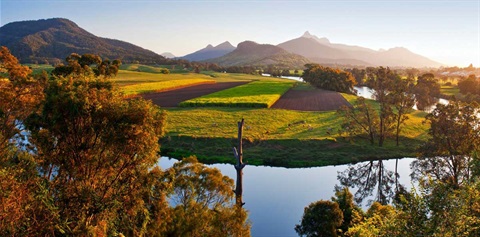Tweed River receives a solid B overall in report card
12 December 2018

Room for improvement in some problem areas
As the Tweed’s school students take home their report cards, the Tweed River has some news to share too – a solid ‘B’ for overall water quality.
The take home message from the 2018 Water Quality Report Card for the Tweed River is doing well overall with room for improvement in some areas. The report card is for the period from May 2017 to April 2018.
The results for Cobaki-Terranora ranges from an A for the Terranora Inlet and Broadwaters to a D for Upper Cobaki-Terranora (D), which includes Durroby, Bilambil, Piggabeen and Cobaki Creeks.
The Lower Tweed Estuary received an A while the Upper Tweed estuary was rated as C.
Coastal Creeks rated a B, while the Rous estuary received a D ranking.
Senior Program Leader Waterways, Tom Alletson, said overall the river is in good condition, with only the upper tributaries of Cobaki and Terranora Broadwaters and the Rous River rating the lowest score of D.
“The river and its tributaries are heavily affected by human and natural pressures including catchment runoff, cattle access, weeds, discharges from wastewater treatment plants and high levels of recreational use,” Mr Alletson said.
“Water quality also varies markedly within the river and across the year due to tidal flushing and rainfall effects.
“The long-term vision for the Tweed Shire’s waterways is that the Tweed River is a special place; a healthy ecosystem supporting lifestyles, culture and productivity,” Mr Alletson said.
“The 2018 Report represents Council’s compliance with water quality objectives and examples of actions undertaken by Council and local community groups to achieve that vision.
“Protecting healthy areas of the river effectively managing run-off from catchments to the waterways requires a strong commitment from both government and the local community,” he said.
Actions Council and community groups are taking to improve the results are: stabliising and revegetating river banks to prevent erosion and improve fish habitat, stock fencing and planting vegetation filters along agricultural drain banks.
Here are some ways we can all help water quality:
• ensure that no contaminants (litter, detergents or pet droppings) are washed into drains
• plant natives in your gardens
• never dump garden waste into the bush.
Council is preparing a 10-year plan to manage the Tweed Estuary. The plan will set out a range of actions that can be implemented by Council, NSW Government, industry and community groups to balance conservation, restoration and use of the river. The plan will be placed on public exhibition in mid-2019 before being finalised.
To view the report card and for more information, visit https://www.tweed.nsw.gov.au/NaturalEnvironment
Downloads
Photo 1(JPG, 149KB)
Caption: The Tweed River has received an independent report on water quality across the catchment.
Photo 2(JPG, 155KB)
Caption: An excerpt from the report card.